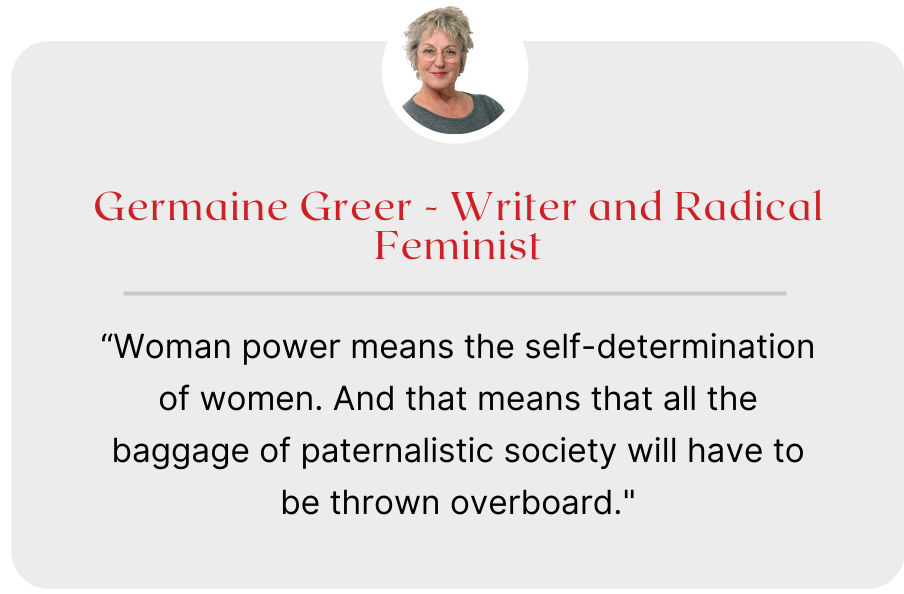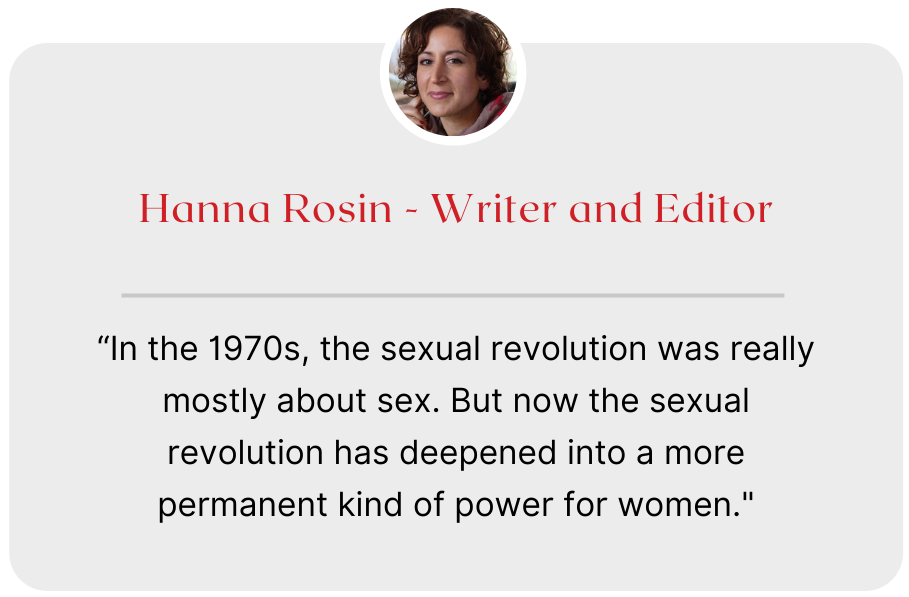Women are incredible. Mothers, partners, scientists, healers, activists, entrepreneurs, sexual beings – there are no limits to what women have achieved and continue to achieve every day. They have pushed boundaries, destroyed barriers, and changed the course of history, despite the oppression and repression of a society that has always tried to control and tame them.
Sure, the path towards a female-dominated world has not been smooth and still isn’t. Yet, women worldwide are getting together to revindicate their place and claim their power back. That’s beautiful and inspiring!
With Women’s History Month approaching, we want to celebrate women’s victories and honor those activists and fighters who paved the way to women’s liberation. A liberation that cannot be deemed complete without sexual empowerment.
But let’s start from the beginning.
The First Wave
The first International Women’s Day was celebrated in 1911 in Austria, Denmark, Switzerland, and Germany, even though, at that time, women still couldn’t vote in most countries. Just a week after, the devastating Triangle Fire in New York City killed 140 working women and drew attention to women’s rights and their working conditions.
In the United States, suffragettes won the right to vote in 1919 and the Nineteenth Amendment was finally ratified in 1920, guaranteeing women’s universal suffrage (however, Black women still couldn’t vote until 1965!).
Many different movements and philosophies arose between the 1920s and 1970s, and among them, we’d like to focus on women’s liberation and sexual freedom.
The Second Wave
The women’s movement of the 1960s was a continuation of the earlier efforts of women activists which resulted in the voting rights.
In the postwar world, long-standing social problems started to gain momentum. Amidst the African American civil rights movement of the ‘50s and ‘60s and the first marches for gay rights of the ‘70s, women joined together to advocate not only for equal rights in the workplace and politics but also for the liberation from cultural stereotypes in their private lives. Including the bedroom, of course!
Awareness about workplace discrimination of women started already during World War II. With men at the front, the United States government encouraged women to do their part and take traditionally male roles. Women enjoyed working outside of their homes, together with the increased responsibilities and the wages that came with it. Things abruptly changed when men returned from the war, as women were forced out of their jobs and asked to get back to their designated role of wives and mothers. It goes without saying that nobody asked them whether they wanted to keep working…
Working women finally realized the profound disparity of employment opportunity and salary, when they saw themselves limited to just being secretaries, teachers, or nurses. Even those women who remained in traditionally male positions earned less than their male co-workers. So, by the 1960s, women began to pressure employers and the government for equal treatment and pay in the workplace.
What does this have to do with sexual liberation, you may ask? Well, the working women’s situation was just a reflection of a deep social stigma well rooted in American society. From religion to politics to media, everyone idealized the middle-class domestic life, where family members had precise and immutable roles. The husband was the one and only breadwinner and the wife was the carer. This stereotype exacerbated women’s frustration and resentment over the years.
Writer and activist Betty Friedan captured women’s sentiment in her book ‘The Feminine Mystique’, published in 1963. In her book, Friedan highlighted the difficulties and the constraints that many women faced when forced into the role of wife and mother and defined only by their relationship to others rather than as individuals.

‘The Feminine Mystique’ stated that women as a class suffered many forms of oppression and discrimination, but they were in particular victims of a delusional system of values that didn’t allow them to express themselves intellectually or emotionally. Women were feeling worthless and deprived of their identity as human beings.
Friedan’s book awoke women’s awareness and made them self-reflect on their role in society and private life. Action soon followed.
In 1966, Friedan led the foundation of the National Organization for Women (NOW) intending to achieve equal rights for women. The organization launched marches, rallies, and nonviolent civil disobedience protests, while also bringing lawsuits and lobbying. Between the late ‘60s and the early ‘70s, other organizations and groups were formed to address black and other ethnic groups of women, lesbians, impoverished women, women in business or politics, and so on. Thanks to these women, history was made and the status quo changed.
The Sexual Liberation
While the NOW and other groups pushed for legislation, a more informal variant of the women’s movement developed, especially among young women. They didn’t necessarily pursue legal or political changes. What they wanted was to change their own lives and relationships.
Some of them focused on redefining female roles and standards, insisting on more realistic depictions of women in the media and on rejecting the standards of female beauty that defined women as sex objects and not pleasure subjects, as they should be. Women began to push back.
In 1970, the first Women’s Liberation Conference took place in England. The same year, Germaine Greer published her controversial book ‘The Female Eunuch’. In her book, Greer stated that women’s sexuality has been castrated over the years and that it was women’s responsibility to get their power and pleasure back. In Greer’s opinion, women’s emancipation could not be achieved by well-behaved middle-class women sitting on committees, signing petitions, or asking for reforms. To be really free, women needed to call for a revolution, stop behaving, and disrupt society. In her book and speeches, Greer built her famous motif of women as ‘eunuchs’, robbed of their vitality and natural sexual energy. Only by rebelling against this false identity, could women reconnect with their instinct, will, and resources.
Greer urged women to own their body and their sexuality. We might not agree with everything she stands for, but she brought women’s wild, sexual energy back on the table.

Thanks to women like Friedan and Greer, the personal slowly started to become political, as the famous slogan says. Women’s personal issues and situations transformed into a proper political movement that was set to overthrow all male-centered stereotypes, including those about sex.
In the 1960s, sex was the word in everyone’s mouth. The introduction of the first contraceptive pill was the start of all public conversations about sex. The pill, in fact, liberated women from the fear of pregnancy and allowed them to experience sex just for the pleasure. Women were finally getting control over their bodies and sex lives!
The work of two scientists influenced the sexual liberation of the ‘60s: Wilhelm Reich and Alfred Kinsey. Psychoanalyst Wilhelm Reich questioned the more restrictive and severe social standards of female sexual behavior, arguing that men and women both needed sexual release and pleasure to live a healthy life. Reich paid his audacity with jail, but his ideas sparked debates and laid the foundation for the sexual revolution. Alfred Kinsey’s books ‘Sexual Behavior in the Human Male’ and ‘Sexual Behavior in the Human Female’ revealed that women were interested in sex for pleasure, and not just for reproduction, as it was commonly believed. Women’s sexual pleasure was finally back in the picture! Kinsey’s findings set women on the path to self-discovery, bodily autonomy, and pleasure that still continues today.

Final Thoughts
The idea that women should be allowed to express their sexuality without judgment is widely accepted today. At least on paper. In reality, though, women are still shamed for pursuing their pleasure and sexual satisfaction.
At Fusion Movement, all our efforts are focused on destigmatizing women’s sexuality and encouraging women to become sexually empowered. This important mission cannot be accomplished without looking back at what women have achieved so far and working together to educate ourselves and others about pleasurable, consensual sex.
To push against a male-centered narrative, it is vital for women to prioritize their pleasure and reconnect themselves with the erotic goddess that lives within. Take a look at our tools and resources to turn the tables and become the protagonist of your sex life here: https://fusionmovement.com/fusion-play/.




